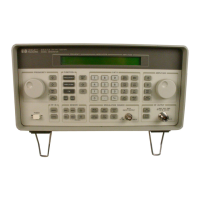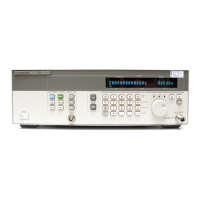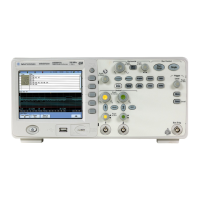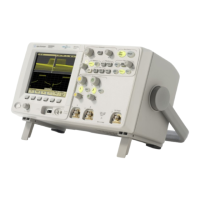73
S:\Hp8960\E1962B CDMA 2000\Pi Release\Reference Guide\Chapters\cdma2000_meas_wquality_desc.fm
Waveform Quality/Code Domain Measurement Description
Waveform Quality/Code Domain Measurement Description
How is a Waveform Quality/Code Domain Power measurement made?
Each waveform waveform quality measurement returns a number of measurements which includes:
• Rho, the percentage of signal energy that correlates with a perfect IS-2000 signal after time offset and
frequency error have been removed
• Code domain power, the power levels of each code channel transmitted by the mobile station.
• Code domain power and noise, the total of power and noise of each code channel transmitted by the mobile
station.
This measurement is designed to analyze signals that may be made up of multiple code channels. Multiple
code channels are used in calls setup using radio configurations three (Fwd3, Rvs3) and above. Any time a call
is connected, waveform quality measurements can be made. Any combination of service option, radio
configuration, or data rate can be measured.
Waveform quality measurements are made by sampling the down-converted input signal, then applying DSP
(Digital Signal Processing) techniques to determine the original data input to the mobile station transmitter’s
Walsh spreading function for each channel. The DSP then generates a representation of what the “ideal”
signal would be given the coding and data in use at the time of transmission. The ideal waveform is then
compared with the waveform being measured to determine the waveform quality.
Table 6. “Waveform Quality/Code Domain Power Measurement Results” lists the Waveform Quality/Code
Domain Power measurements:
Table 6. Waveform Quality/Code Domain Power Measurement Results
Waveform Quality Code Domain Power
Rho Code Domain Power (I-Channel)
Frequency Error Code Domain Power (Q-Channel)
Timing Error Code Domain Power + Noise (I-Channel)
Carrier Feedthrough Code Domain Power + Noise (Q-Channel)
Phase Error
Magnitude Error
Error Vector Magnitude (EVM)

